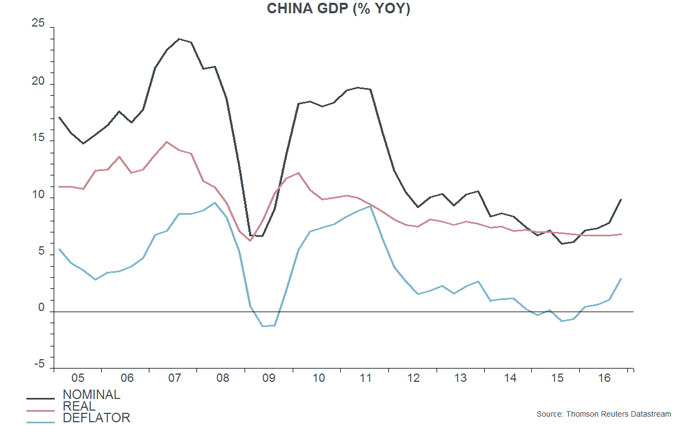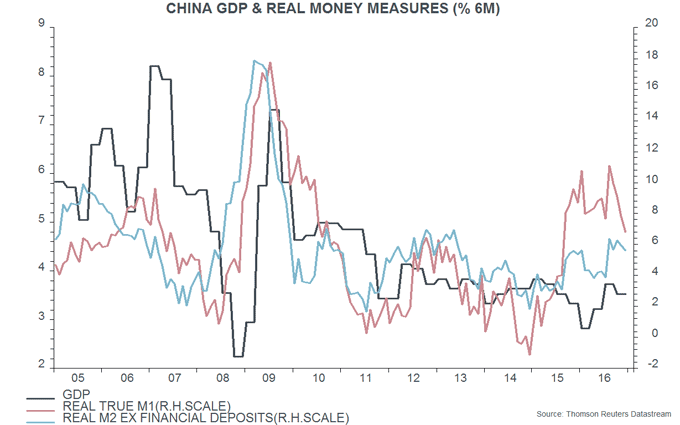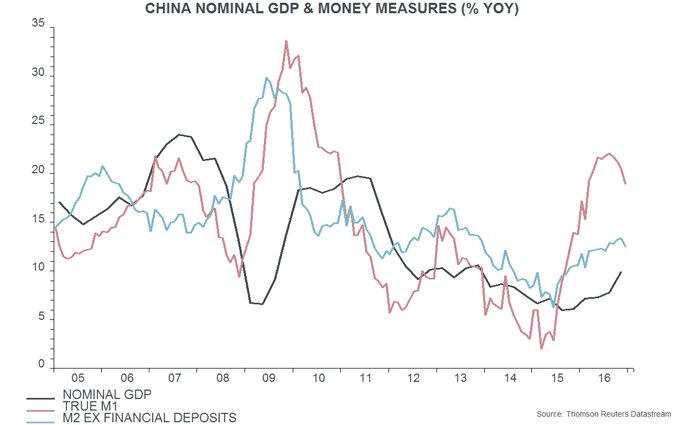Chinese GDP inflation surge arguing for tighter policy
Chinese nominal GDP growth strengthened significantly in late 2016 and monetary trends suggest a further pick-up through the first half of 2017, at least. Concern about rising inflation is expected here to be reflected in gradual monetary policy tightening that may boost the renminbi in the absence of US protectionist actions.
Annual growth of nominal GDP has risen from a low of 6.0% in the third quarter of 2015 to 9.9% in the fourth quarter of 2016, a three-year high. The increase has been driven by the GDP deflator, with annual growth of real GDP stable at 6.7-6.9% over this period, according to National Bureau of Statistics (NBS) data – see first chart.
The stability of annual real GDP growth, however, conceals a significant economic slowdown in 2015 / early 2016 followed by a marked recovery. Two-quarter real GDP expansion* fell to a low of 2.8% in the first quarter of 2016 (equivalent to annualised growth of 5.7%) but rebounded to 3.7% (7.6% annualised) in the third quarter, remaining strong at 3.5% (7.2%) in the fourth quarter. This slowdown and recovery were foreshadowed by weakness in inflation-adjusted money measures in 2014 that reversed in 2015-16 – second chart.
Annual growth rates of narrow and broad money may have peaked out in late 2016 but usually lead nominal GDP growth by six to 12 months, suggesting that the latter will rise further into the second quarter of 2017, at least – third chart. GDP inflation is likely to continue to drive the pick-up, although economic growth will probably also firm.
Consumer price inflation was 2.1% in December but may narrow the gap with rising GDP deflator inflation – 2.9% in the fourth quarter, the highest since the first quarter of 2012 – as the year progresses. The authorities will want to avoid an overshoot of the 3% target and may continue to tighten monetary policy to head off this prospect. Tighter monetary conditions may be associated with a slowdown or reversal of capital outflows and a consequent stabilisation or recovery in the renminbi – see previous post.
*Derived from NBS quarter-on-quarter seasonally-adjusted growth data.

Reader Comments